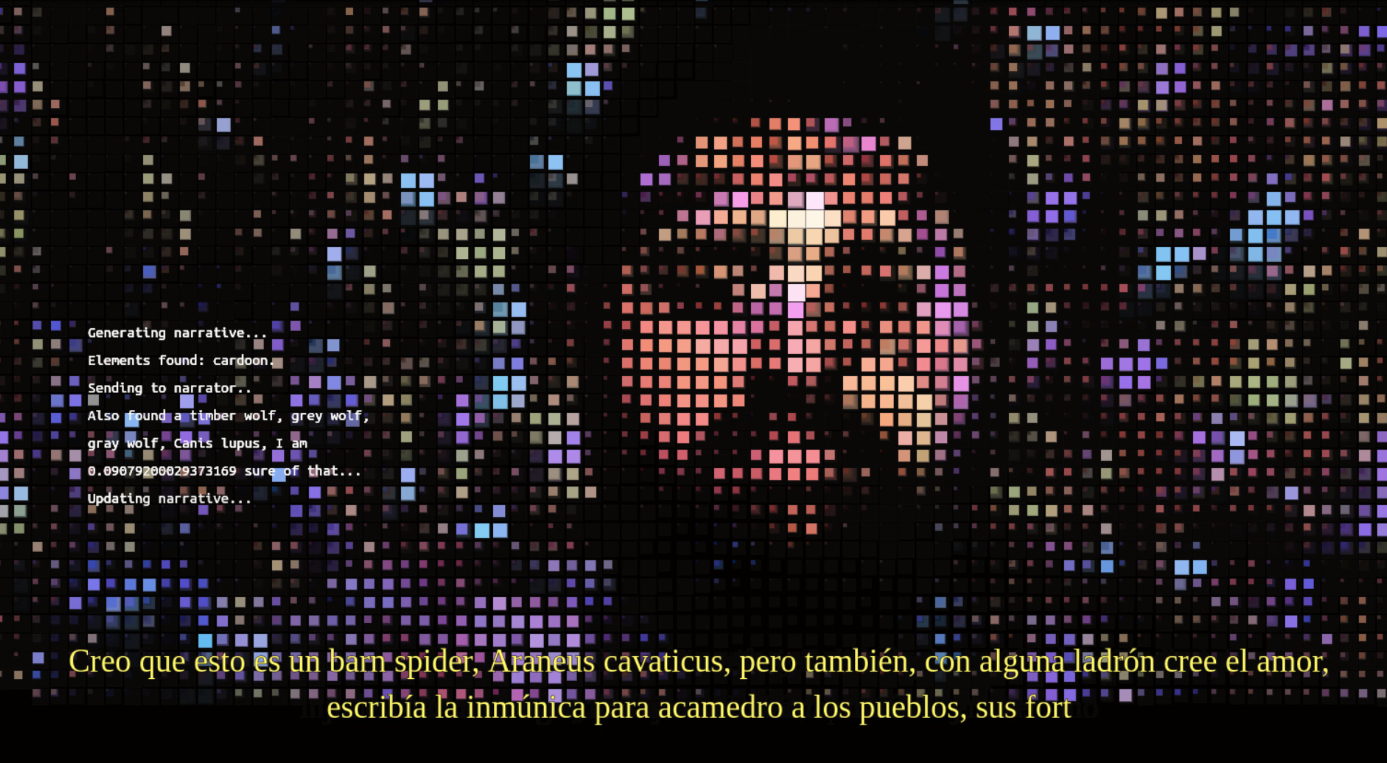

Experimenting with narrative.
The work arises from a need to organize a series of chaotic experiences while traveling to more than 39 countries and 1,532 flight hours with a social robot.
To make sense of the speed and heterogeneity of these episodes, I've designed
a writing system that articulates two structures: a convolutional neural network using mobile vision and a long short-term memory (LSTM) architecture of recurrent neural network (RNN).
Writing with Neural Networks
A convolutional neural network using mobile vision interprets a set of audiovisual micro-narratives that represent personal waiting times or moments in which I feel present.
Then, the objects and situations recognized by the machine
are sent to a long short-term memory (LSTM) recurrent neural network (RNN) that has been trained on 19th-century travel literature, the NNR model then narrates what is happening -or what it thinks is happening- in the image.
The work is also an experiment around an endless writing action that tries to understand a world constituted by limited objects and perceptions, perhaps a reflection of our own cognitive operations.

Exhibitions
Game on! The art in games.
San Martín Cultural Center, Buenos Aires,
2019.
Mixed feelings. Bots and Machine
Learning: Chatbots, Artbots
and Machine Learning for Web Application. School Of Machines, Making & Make–Believe, Berlin,
Germany, 2019.